Master the Development of Sustainable Architectural ConceptS
START IN OCTOBER 7th
Introduction
In our modern world, the effects of human activities on the environment have become an escalating concern. The concept of “environmental damage” encompasses a broad spectrum of problems, ranging from the destruction of forests and pollution to the transformations brought by climate change and the disruption of natural habitats. In this article, we will thoroughly explore the consequences of environmental damage, providing insights into the profound impacts it has on our planet, backed by real-world data. Moreover, we will present actionable solutions that individuals and organizations can adopt to address these pressing issues. Let’s embark on this journey to understand the gravity of environmental damage and how we can collectively make a difference.
Understanding Environmental Damage
Environmental damage, sometimes referred to as environmental degradation, is the gradual deterioration of our planet’s natural condition caused by human activities. It includes a wide range of harmful actions that affect our environment, including:
1. Pollution
Pollution stands out as one of the most widespread and concerning environmental problems. It takes various forms, such as:
- Air Pollution: Emitted from industries and vehicles, it includes harmful chemicals and particles that pollute the air we breathe, impacting human health and the environment.
- Water Pollution: Often caused by chemical runoff from agricultural practices and improper disposal of waste, water pollution affects aquatic ecosystems and can contaminate our drinking water sources.
- Soil Pollution: Improper disposal of hazardous materials and the use of toxic pesticides can lead to soil pollution, jeopardizing agriculture and overall environmental health.
The World Health Organization (WHO) reports that air pollution is responsible for an estimated 4.2 million premature deaths worldwide each year.
According to the United Nations, more than 80% of the world’s wastewater is discharged into the environment without treatment, contributing to water pollution.
2. Deforestation
Deforestation involves the uncontrolled cutting down of trees, often to make way for agriculture or urban development. Its consequences are far-reaching:
- Loss of Vital Habitats: The destruction of forests results in the loss of crucial habitats for countless plant and animal species, pushing some to the brink of extinction.
- Increased Greenhouse Gas Emissions: Deforestation releases stored carbon into the atmosphere, contributing significantly to global warming.
- Ecological Disruption: The removal of forests disrupts the delicate balance of ecosystems, impacting biodiversity and ecological services.
The Food and Agriculture Organization (FAO) estimates that forests covering an area equivalent to 27 soccer fields are lost every minute.
3. Climate Change
Climate change is driven by human activities, primarily the burning of fossil fuels and the release of greenhouse gases:
- Rising Global Temperatures: Data from NASA shows that the Earth’s average temperature has risen by approximately 1.11 degrees Celsius (or 2 degrees Fahrenheit) since the late 19th century.
- Extreme Weather Events: The Intergovernmental Panel on Climate Change (IPCC) reports an increase in the frequency and intensity of extreme weather events, such as hurricanes and wildfires.
- Long-Term Consequences: Climate change has long-term consequences, including sea-level rise, altered precipitation patterns, and disruptions to ecosystems.
4. Habitat Destruction
As human populations expand, natural habitats are transformed into urban environments:
- Species at Risk: The International Union for Conservation of Nature (IUCN) lists thousands of species at risk of extinction due to habitat destruction.
- Ecosystem Disruption: Habitat destruction disrupts the intricate web of life, impacting not only individual species but the overall health of ecosystems.
In this exploration of environmental damage, it is evident that the data reinforces the urgency of addressing these issues. At UGREEN, we offer expert guidance on sustainable practices through our Sustainability Consulting services, and we conduct comprehensive Life Cycle Assessments to help individuals and organizations make informed decisions that contribute to a more sustainable future.
Taking Concrete Steps to Address Environmental Damage
Now that we understand the gravity of environmental damage, it’s of vital importance to go beyond awareness and actively engage in solutions. Here are practical steps you can take:
1. Reduce, Reuse, Recycle
Reducing Consumption: Every product we consume has an environmental footprint. By consciously reducing our consumption of goods and resources, we can significantly decrease the strain on the environment. Simple choices like using reusable bags and buying products with minimal packaging can make a big difference.
Reusing Items: Before discarding something, consider if it can be reused. Extend the life of items such as clothing, electronics, and furniture. This not only reduces waste but also conserves the resources needed to manufacture new products.
Recycling Materials: Recycling is a key strategy in waste reduction. Recycling paper, glass, plastics, and metals conserves energy and reduces the need for raw materials. Check your local recycling guidelines to ensure you’re recycling correctly.
In the United States, recycling efforts alone save over 700 million trees, 300 billion gallons of water, and enough energy to power 14 million homes for a year each year.
2. Support Renewable Energy
Transitioning to renewable energy sources is a significant step in combating environmental damage:
Solar Power: Solar panels convert sunlight into electricity without emitting greenhouse gases. The cost of solar power has significantly decreased, making it accessible to more people.
Wind Power: Wind turbines generate electricity from the wind’s kinetic energy, offering a clean and sustainable energy source.
In 2020, renewable energy sources surpassed coal as the largest source of electricity generation in the European Union, reducing carbon emissions significantly.
3. Conservation Efforts
Supporting conservation organizations and initiatives is crucial for preserving our planet’s biodiversity:
Protecting Natural Habitats: Organizations like the World Wildlife Fund (WWF) work tirelessly to protect natural habitats and the species that depend on them. Donating or volunteering with such organizations can make a meaningful difference.
Endangered Species: Many species face the risk of extinction. By supporting initiatives dedicated to conserving and rehabilitating endangered species, we can help safeguard the web of life.
The African elephant population declined by 30% between 2007 and 2014. Conservation efforts, such as those led by WWF, have been instrumental in curbing this decline.
4. Advocate for Change
Advocacy for environmentally responsible policies is a powerful way to drive change:
Environmental Policies: Advocate for policies that prioritize sustainability, reduce pollution, and promote responsible resource management. Engage with local and national policymakers to voice your concerns.
Community Engagement: Join or support local environmental groups that work to address environmental issues within your community. Collective action can lead to meaningful change.
Grassroots movements and advocacy efforts have played pivotal roles in shaping policies and regulations to protect the environment.
By taking these actions, we can collectively combat environmental damage and work toward a sustainable future.

Understanding ESG and Its Connection to Environmental Impact
In today’s world, there’s a growing recognition that businesses and organizations should not only focus on profits but also consider their broader impact on society and the planet. This approach is encapsulated in the acronym ESG, which stands for Environmental, Social, and Governance. In this section, we’ll delve into what ESG entails and how it relates to the topics of environmental impact and sustainability.
What is ESG?
ESG represents a framework that evaluates a company or organization’s performance in three key areas:
1. Environmental
The “E” in ESG pertains to a company’s environmental impact. It assesses how well an entity manages its relationship with the environment. Key considerations include:
- Carbon Emissions: Measurement and reduction of greenhouse gas emissions.
- Resource Conservation: Efficient use of natural resources such as water and energy.
- Waste Management: Strategies for reducing waste and promoting recycling.
2. Social
The “S” encompasses an organization’s social responsibilities, which relate to its interactions with people and communities. This dimension examines:
- Employee Well-being: Ensuring a safe, diverse, and inclusive workplace.
- Community Engagement: Involvement in local communities and support for social causes.
- Product Safety: The safety and ethical implications of products and services.
3. Governance
The “G” focuses on the governance and ethics of an organization. It evaluates aspects like:
- Board Diversity: The composition of the company’s board of directors.
- Ethical Practices: Transparency, accountability, and adherence to ethical standards.
- Shareholder Rights: Protection of shareholder interests and rights.
The Connection to Environmental Impact and Sustainability
ESG is intrinsically linked to environmental impact and sustainability. By emphasizing the “E” in ESG, organizations commit to reducing their environmental footprint and making responsible choices for the planet. Here’s how ESG aligns with the topics of environmental damage and sustainability:
- Environmental Impact Reduction: Companies that incorporate ESG principles actively work towards reducing pollution, conserving resources, and mitigating climate change. These efforts directly address the environmental damage we discussed earlier.
- Long-Term Sustainability: The “E” in ESG promotes practices that ensure the sustainability of resources and ecosystems. This aligns with the broader goal of creating a sustainable future for our planet.
According to a report by McKinsey & Company, companies with strong ESG performance have shown a lower cost of capital, improved operational performance, and enhanced resilience during economic downturns.
Incorporating ESG principles into business operations is not only a responsible choice but also one that can lead to positive financial outcomes. It demonstrates a commitment to addressing environmental damage and contributing to sustainability. At UGREEN, our Sustainability Consulting services can help organizations integrate ESG considerations into their strategies, fostering a more sustainable and responsible approach to business.
In Conclusion: A Call to Action for a Sustainable Future
In conclusion, the impact of environmental damage reverberates throughout our world, casting a shadow over various facets of our lives. It transcends the boundaries of individual concern, touching upon our collective well-being, economic stability, and the intricate ecosystems that sustain life on Earth. Yet, there is hope.
- Understanding the Consequences: By comprehending the tangible consequences of environmental damage, we equip ourselves with the knowledge needed to drive change. We have seen how pollution endangers public health, deforestation contributes to climate change, and habitat destruction disrupts ecosystems. These are not abstract issues but real-world challenges that demand our attention.
- Taking Meaningful Action: The path to a more sustainable future lies in the choices we make today. By embracing practices such as the three Rs (Reduce, Reuse, Recycle), supporting renewable energy sources, championing conservation efforts, and advocating for environmentally responsible policies, we can initiate positive change.
- Real-world Impact: These actions are not in vain. They align with global efforts to combat environmental damage and drive sustainability. For instance, the adoption of renewable energy sources is rapidly reducing carbon emissions and helping mitigate climate change. The recycling of materials saves valuable resources and reduces pollution. These steps collectively pave the way for a brighter, more sustainable future.
- Your Role in the Journey: As you embark on this journey towards a greener, more sustainable world, remember that you are not alone. UGREEN stands ready to provide guidance and support. Together, we can accelerate sustainability worldwide through informed decisions, responsible practices, and a commitment to safeguarding our planet for current and future generations.
In unity and action, we can mitigate the profound impacts of environmental damage and leave a legacy of environmental stewardship for generations to come.
If you watn o learn about our consultancies in Portuguese language, click here.